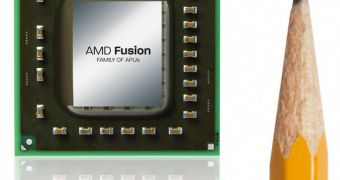Thanks to a team of researchers from North Carolina State University, we may not have to wait until 2014 for faster hybrid APUs and CPUs to become available.
AMD said, during the Financial Analyst Day, that it would have “fully fused” accelerated processing units by 2014.
Fortunately, we won't have to wait quite as long for a visible performance improvement to hybrid processors, which have both x86 and GPU components on the same die.
A team of scientists from North Carolina State University have developed a technique that will enable all hybrid chips to work over 20% better.
“Chip manufacturers are now creating processors that have a ‘fused architecture,’ meaning that they include CPUs and GPUs on a single chip,” says Dr. Huiyang Zhou, an associate professor of electrical and computer engineering who co-authored a paper on the research.
“This approach decreases manufacturing costs and makes computers more energy efficient. However, the CPU cores and GPU cores still work almost exclusively on separate functions. They rarely collaborate to execute any given program, so they aren’t as efficient as they could be. That’s the issue we’re trying to resolve.”
Basically, CPU and GPU fetch data from off-chip main memory at the same speed, more or less, but the latter can execute computation faster while the former excels at handling more complex tasks.
Thus, if a CPU knows what data the GPU will need, it can fetch it and send it over instead of processing it itself. That way, the x86 core can focus on what it is best at.
“Our approach is to allow the GPU cores to execute computational functions, and have CPU cores pre-fetch the data the GPUs will need from off-chip main memory,” Zhou says.
“This is more efficient because it allows CPUs and GPUs to do what they are good at. GPUs are good at performing computations. CPUs are good at making decisions and flexible data retrieval.”
Preliminary testing showed a performance boost of 21.4 percent. Both Intel and AMD chips should benefit.

 14 DAY TRIAL //
14 DAY TRIAL //